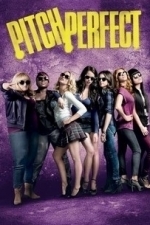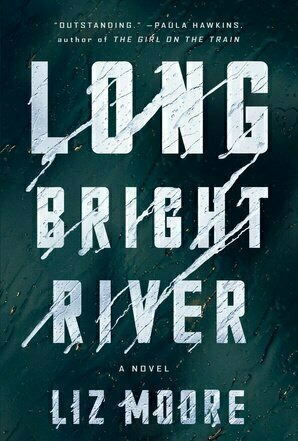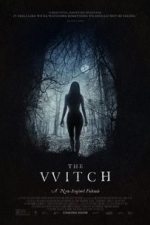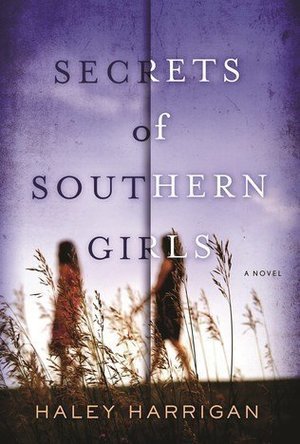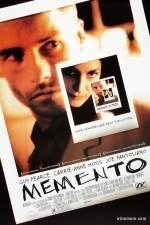Search
Search results
Gareth von Kallenbach (980 KP) rated Pitch Perfect (2012) in Movies
Aug 7, 2019
I have to admit, I am a sucker for movies with singing and dancing. And when there’s competition involved, even better! When I saw the trailer for Pitch Perfect, my first thought was it looked like “Bring It On” but for a capella groups. My second thought was, “Where do I line up?”
Sure, such movies are usually trite and predictable. But who cares? There’s singing and dancing! I don’t care that I’m expected to buy 27 year old Anna Kendrick as a rebellious, aspiring DJ named Beca, starting her freshman year at Barden College. She and Bella just graduated from high school in the Twilight series, so, sure, why not? Bribed by her dad with a promise to help her move to L.A. if she gave college a chance for one year, Becca considers what Barden has to offer. Unfortunately for her, the college’s “D.J. Club” is more about Semitic sign language than mixing beats.
Enter The Bellas, the college’s recently disgraced female a capella group lead by Aubrey (Anna Camp) and Chloe (Brittany Snow). Because of the uptight Aubrey’s shocking performance at a recent competition, they need to rebuild a group that can sing in saccharine-sweet, vanilla harmony. The pickings are slim (mostly) and what comes together is a motley crew of questionable talent. There’s Fat Amy played hilariously by Rebel Wilson, who can mermaid dance like no other. (Mainly because who else would?) There’s sexy Stacie (Alexis Knapp) who may be more comfortable with a stripper pole than singing soprano, and butch Cynthia who can’t keep her eyes of Stacie. Also in the group is Lilly (Hanna Mae Lee) who is borderline mute. So it’s no wonder Chloe aggressively recruits Beca whom she ambushes in the shower after overhearing Beca singing David Guetta’s “Titanium”.
The Bellas arch rivals are the Treble Makers and of course, Beca’s love interest in the movie is Treble Maker, Jesse (Skylar Astin) who somehow gets cuter with every scene. But he’s got to work pretty hard to impress Beca who’s more interested in her headphones than listening to Jesse wax on about the “Breakfast Club” which he believes has the best movie ending ever. Personally, I was a little disconcerted by the fact that college-age kids spoke of “Breakfast Club” with a reverance usually reserved for classics like Casablanca. Even my guest leaned over and said, “But that’s so before their time.” Then I realized, to kids who weren’t even alive when Breakfast Club was made, it would be a classic.
But Jesse’s pursuit of her isn’t Beca’s only problem. The songs Aubrey is dead set on the Bellas perfecting are yawn-worthy at best, which was grating on the music mixologist. The Bellas simply can’t win against the Treble Makers with tired arrangements of Ace of Base, Bangles and Gloria Estefan songs. But Aubrey is resistant to Beca’s attempts to bring the Bellas into the current decade. Therein lies the movie’s requisite conflicts.
Pitch Perfect in a word is fun. Simply fun. There were plenty of laughs, mainly thanks to Rebel Wilson’s scene-stealing lines and some outrageous repartee between competition commentators played by Elizabeth Banks and John Michael Higgins. The highlights, of course, were the singing performances. All of the actors have great pipes and the harmonies will please any choir geek who attends. But lest you think it’s only a teen flick, in an audience of mixed generations, the loudest laughter was from the older audience.
Sure, such movies are usually trite and predictable. But who cares? There’s singing and dancing! I don’t care that I’m expected to buy 27 year old Anna Kendrick as a rebellious, aspiring DJ named Beca, starting her freshman year at Barden College. She and Bella just graduated from high school in the Twilight series, so, sure, why not? Bribed by her dad with a promise to help her move to L.A. if she gave college a chance for one year, Becca considers what Barden has to offer. Unfortunately for her, the college’s “D.J. Club” is more about Semitic sign language than mixing beats.
Enter The Bellas, the college’s recently disgraced female a capella group lead by Aubrey (Anna Camp) and Chloe (Brittany Snow). Because of the uptight Aubrey’s shocking performance at a recent competition, they need to rebuild a group that can sing in saccharine-sweet, vanilla harmony. The pickings are slim (mostly) and what comes together is a motley crew of questionable talent. There’s Fat Amy played hilariously by Rebel Wilson, who can mermaid dance like no other. (Mainly because who else would?) There’s sexy Stacie (Alexis Knapp) who may be more comfortable with a stripper pole than singing soprano, and butch Cynthia who can’t keep her eyes of Stacie. Also in the group is Lilly (Hanna Mae Lee) who is borderline mute. So it’s no wonder Chloe aggressively recruits Beca whom she ambushes in the shower after overhearing Beca singing David Guetta’s “Titanium”.
The Bellas arch rivals are the Treble Makers and of course, Beca’s love interest in the movie is Treble Maker, Jesse (Skylar Astin) who somehow gets cuter with every scene. But he’s got to work pretty hard to impress Beca who’s more interested in her headphones than listening to Jesse wax on about the “Breakfast Club” which he believes has the best movie ending ever. Personally, I was a little disconcerted by the fact that college-age kids spoke of “Breakfast Club” with a reverance usually reserved for classics like Casablanca. Even my guest leaned over and said, “But that’s so before their time.” Then I realized, to kids who weren’t even alive when Breakfast Club was made, it would be a classic.
But Jesse’s pursuit of her isn’t Beca’s only problem. The songs Aubrey is dead set on the Bellas perfecting are yawn-worthy at best, which was grating on the music mixologist. The Bellas simply can’t win against the Treble Makers with tired arrangements of Ace of Base, Bangles and Gloria Estefan songs. But Aubrey is resistant to Beca’s attempts to bring the Bellas into the current decade. Therein lies the movie’s requisite conflicts.
Pitch Perfect in a word is fun. Simply fun. There were plenty of laughs, mainly thanks to Rebel Wilson’s scene-stealing lines and some outrageous repartee between competition commentators played by Elizabeth Banks and John Michael Higgins. The highlights, of course, were the singing performances. All of the actors have great pipes and the harmonies will please any choir geek who attends. But lest you think it’s only a teen flick, in an audience of mixed generations, the loudest laughter was from the older audience.
Kristy H (1252 KP) rated Long Bright River in Books
Apr 23, 2020
This was the first book I ever checked out from Libby. I miss my library right now, but I'm glad for that app, even if I can only put six books on hold at one time. (What is that?! Six holds; that's for amateurs.)
Kensington, a neighborhood in Philadelphia, is plagued by drug use, especially heroin. It's where sisters Kacey and Mickey grew up. The girls lost their mother at a young age and were raised by their grandmother, Gee, who provided shelter and not much else. Now, Mickey is determined to raise her son Thomas differently. With love and kindness and a feeling of safety. Mickey is a police officer, so she's more than familiar with the streets of Kensington. At the same time, Kensington is struck with a series of murders, Kacey disappears. Mickey and Kacey haven't had much contact in years, since her sister became stuck in the tangle of addiction, but she's still worried. Even more so since those being murdered are young women, no doubt drug and sex workers. Found strangled on the streets. As Mickey starts looking into the murders, she gets caught up in a twisted web of lies and deceit--some of it related to her missing sister--and soon it may be too late to save either Mickey or Kacey.
The first time I found my sister dead, she was sixteen. It was the summer of 2002. Forty-eight hours earlier, on a Friday afternoon, she’d left school with her friends, telling me she’d be back by evening. She wasn’t.
This isn't a fun book to read, so if you're looking for a feel-good read right now, this isn't it. But it's a well-written, extremely powerful look at addiction. While it focuses on the story of the murdered girls, it's also an in-depth character study, taking us into Mickey's history with her sister and how their past has formed their present. Told in a then and now format, we learn about the sisters, and we get a harrowing and detailed look at the effect of addiction, not just on Kacey, but on an entire town. It's depressing, it's real, and it's wonderfully done.
Kacey told me that time spent in addiction feels looped. Each morning brings with it the possibility of change, each evening the shame of failure.
This is not really a fast-moving book, but it does have twists and turns, many of them surprising. There's plenty to keep you guessing, as we try to figure out what is happening to the women on the streets in Kensington. In turn, we have to figure out Kacey and Mickey's past and how it's brought us to where we are today. Characters are sparse, but incredibly well-created, with my favorite, beyond the sisters, being Mickey's landlord, Mrs. Mahon, a formidable woman in her own right. And Mickey's sweet, wise young son Thomas.
While Kacey is clearly the damaged one on paper, as an addict, often living on the streets, we see Mickey isn't always much better. She's had a tough time, and it's hard for her to trust anyone. Both she and Kacey are astounding characters, who stand out in this powerful novel about addiction, police abuse, and the love of a mother. This isn't always an easy read, but I'm glad I picked it up. It will stick with me for some time.
Kensington, a neighborhood in Philadelphia, is plagued by drug use, especially heroin. It's where sisters Kacey and Mickey grew up. The girls lost their mother at a young age and were raised by their grandmother, Gee, who provided shelter and not much else. Now, Mickey is determined to raise her son Thomas differently. With love and kindness and a feeling of safety. Mickey is a police officer, so she's more than familiar with the streets of Kensington. At the same time, Kensington is struck with a series of murders, Kacey disappears. Mickey and Kacey haven't had much contact in years, since her sister became stuck in the tangle of addiction, but she's still worried. Even more so since those being murdered are young women, no doubt drug and sex workers. Found strangled on the streets. As Mickey starts looking into the murders, she gets caught up in a twisted web of lies and deceit--some of it related to her missing sister--and soon it may be too late to save either Mickey or Kacey.
The first time I found my sister dead, she was sixteen. It was the summer of 2002. Forty-eight hours earlier, on a Friday afternoon, she’d left school with her friends, telling me she’d be back by evening. She wasn’t.
This isn't a fun book to read, so if you're looking for a feel-good read right now, this isn't it. But it's a well-written, extremely powerful look at addiction. While it focuses on the story of the murdered girls, it's also an in-depth character study, taking us into Mickey's history with her sister and how their past has formed their present. Told in a then and now format, we learn about the sisters, and we get a harrowing and detailed look at the effect of addiction, not just on Kacey, but on an entire town. It's depressing, it's real, and it's wonderfully done.
Kacey told me that time spent in addiction feels looped. Each morning brings with it the possibility of change, each evening the shame of failure.
This is not really a fast-moving book, but it does have twists and turns, many of them surprising. There's plenty to keep you guessing, as we try to figure out what is happening to the women on the streets in Kensington. In turn, we have to figure out Kacey and Mickey's past and how it's brought us to where we are today. Characters are sparse, but incredibly well-created, with my favorite, beyond the sisters, being Mickey's landlord, Mrs. Mahon, a formidable woman in her own right. And Mickey's sweet, wise young son Thomas.
While Kacey is clearly the damaged one on paper, as an addict, often living on the streets, we see Mickey isn't always much better. She's had a tough time, and it's hard for her to trust anyone. Both she and Kacey are astounding characters, who stand out in this powerful novel about addiction, police abuse, and the love of a mother. This isn't always an easy read, but I'm glad I picked it up. It will stick with me for some time.

Halcyon 6: Starbase Commander
Games
App Watch
*** App Store Game Of The Day *** *** Winner Best PC Game - DIGI Awards 2016 *** *** Runner Up...
games
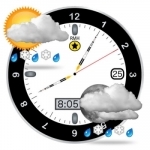
It's A Better Clock - Weather forecaster and Lunar Phase calendar
Weather and Utilities
App
It's a cool, accurate, multifunction clock that is also a Weather Bot forecaster and Lunar Phase...

Silent Landscape at Gallipoli: The Battlefields of the Dardanelles, One Hundred Years on
Book
In our first book, we explored the impact of the fighting on the landscape of the Western Front -...

The Platinum Raven and Other Novellas
Book
"The Platinum Raven and other novellas" by Rohan Quine is a paperback comprising a collection of...
Sean Freese (4 KP) rated The Witch (2015) in Movies
Jun 25, 2020
THE VVITCH
The full title is, The Witch: A New England Folktale. Like Grimm’s fairytales, American folklore has taken revisions over the centuries to become a palatable collection of juvenile life lessons. Anyone who has read the original versions of these stories knows how brutal, horrifying, and far removed they are from our current values. As much as I would not condone reading original classic witch tales to a small child, they do contain much deeper implications and ideas than the simple “Don’t tell lies” that are gleaned from modern revisions. What’s fascinating about The Witch is how familiar the setting and story is, without a single cliché or moment of prediction to speak of. The evil that was feared in 17th Century Puritan America has been so eclipsed by the human horrors of The Salem Witch Trials, that we have forgotten what it was to fear a witch.
We know these characters only by their Christian names. William removes his family from their Colonial settlement due to an incompatibility of faith. The colony of Puritans isn’t Christian enough. With his wife, Katherine, William takes his 4 children into the wilds of the Northeast. Airs of The Crucible envelope the setting. Common pronouns are replaced with “thines” and “thous”. Dialogue is delivered as if quoted from Shakespeare or the Bible itself. In the past, this oral dynamic has always sounded ardently rehearsed. Somehow, it’s natural here. Considering William’s rigorous faith, you might expect him to be an overbearingly shrewd father. He is in fact a loving and good man of his time; often a pushover. Katherine is the more fearsome parent, with a shrill voice and gaunt pointed face. While they do live in hardship, this is a good family. Once Fall deadens the colors and greys the skies, things begin to take a disturbing turn.
Ralph Ineson and Kate Dickie play the parents without an exaggeration of the material. Remarkable still are the actors portraying their children. Harvey Scrimshaw plays William’s 10-year-old son, Caleb, as natural as can be imagined. The dramatic beats of a horror movie come with taxing climactic moments and Scrimshaw acts beyond his years. Anya Taylor-Joy plays the eldest daughter Thomasin; a doe-eyed blonde beauty who plays the most relatable character of the flock. The dynamic between Caleb and Thompsin has notes of innocent sexual tension. Their secluded life leaves a great deal of new feelings that can’t be addressed due to their customs. These feelings lead to foreign temptations that are preyed upon by the timeless evil beyond the trees.
The greatest achievement of this film is how faithful it is to its setting and story, while keeping enough behind the veil to become engrossing. The tale feels as old as any, drawing from universal fears and motivations. How it draws you in, keeping you tied to the victims and their perspective while keeping the evil at arm’s length, shows a discipline of craft that greatly compliments the material. Much like vampires, witches have been trivialized and diluted by film into something superficially attractive and entertainingly evil. As with Noseferatu, seeing a witch living a damnable existence of ugliness is much more appropriate. If they’re ever beautiful, they won’t be for long.
The full title is, The Witch: A New England Folktale. Like Grimm’s fairytales, American folklore has taken revisions over the centuries to become a palatable collection of juvenile life lessons. Anyone who has read the original versions of these stories knows how brutal, horrifying, and far removed they are from our current values. As much as I would not condone reading original classic witch tales to a small child, they do contain much deeper implications and ideas than the simple “Don’t tell lies” that are gleaned from modern revisions. What’s fascinating about The Witch is how familiar the setting and story is, without a single cliché or moment of prediction to speak of. The evil that was feared in 17th Century Puritan America has been so eclipsed by the human horrors of The Salem Witch Trials, that we have forgotten what it was to fear a witch.
We know these characters only by their Christian names. William removes his family from their Colonial settlement due to an incompatibility of faith. The colony of Puritans isn’t Christian enough. With his wife, Katherine, William takes his 4 children into the wilds of the Northeast. Airs of The Crucible envelope the setting. Common pronouns are replaced with “thines” and “thous”. Dialogue is delivered as if quoted from Shakespeare or the Bible itself. In the past, this oral dynamic has always sounded ardently rehearsed. Somehow, it’s natural here. Considering William’s rigorous faith, you might expect him to be an overbearingly shrewd father. He is in fact a loving and good man of his time; often a pushover. Katherine is the more fearsome parent, with a shrill voice and gaunt pointed face. While they do live in hardship, this is a good family. Once Fall deadens the colors and greys the skies, things begin to take a disturbing turn.
Ralph Ineson and Kate Dickie play the parents without an exaggeration of the material. Remarkable still are the actors portraying their children. Harvey Scrimshaw plays William’s 10-year-old son, Caleb, as natural as can be imagined. The dramatic beats of a horror movie come with taxing climactic moments and Scrimshaw acts beyond his years. Anya Taylor-Joy plays the eldest daughter Thomasin; a doe-eyed blonde beauty who plays the most relatable character of the flock. The dynamic between Caleb and Thompsin has notes of innocent sexual tension. Their secluded life leaves a great deal of new feelings that can’t be addressed due to their customs. These feelings lead to foreign temptations that are preyed upon by the timeless evil beyond the trees.
The greatest achievement of this film is how faithful it is to its setting and story, while keeping enough behind the veil to become engrossing. The tale feels as old as any, drawing from universal fears and motivations. How it draws you in, keeping you tied to the victims and their perspective while keeping the evil at arm’s length, shows a discipline of craft that greatly compliments the material. Much like vampires, witches have been trivialized and diluted by film into something superficially attractive and entertainingly evil. As with Noseferatu, seeing a witch living a damnable existence of ugliness is much more appropriate. If they’re ever beautiful, they won’t be for long.
BookInspector (124 KP) rated Secrets of Southern Girls in Books
Sep 24, 2020
I am very pleased to participate in my first #SpotlightTour, and thanks a lot to Sourcebooks Landmark and Liz Kelsch for inviting me. When I saw the description of this book, it really left me intrigued and raised a lot of questions. I am really glad I chose this book, because it is full of secrets and sorrow, and it is amazing to read, how it all unfolds in front of you.
When I finished reading this book, first mind which came to me was “Looking for Reba” (instead of "Looking for Alaska" by J. Green). I think it had that vibe going on, but this book was way better for me. The characters of this book are very interesting and really diverse; most of them seem really complicated and tired of Reba’s memory/ghost following them around. The main characters of this book supposed to be Julie and August, but Reba and Toby steals the spotlight with their story. Reba’s memory seems to ruin all these people’s lives. Julie separated from her husband due to constant memory of Reba, and the guilt, which was eating her. August never forgot his first love and never moved on in his life, looking for answers. Toby left obsessed with Reba’s memory and chooses not to let go of it. I really loved the way author portrayed the feelings of these characters, especially Reba’s. The detail of it, the teenage confusion of what she wants, choices which had to be made when you are still in school. They absolutely fascinated me. I really enjoy when authors tell the story from different character’s perspective, and this books didn’t leave me disappointed. All the characters are different personalities, and reading from different perspectives made the book more colourful and way more interesting to read.
The plot of the book starts quite slowly, by introducing Julie and her family. Well let me be honest with you, it dragged a little bit at the beginning, but once Julie and August got the diary, the whole book turns around into this fast paced and incredibly twisty adventure. So my advice would be, just be patient, because what is coming up will shock you, and will grip you so hard, that it will be hard to put it down (At least that’s what happened to me) . The plot takes the story back to the times when Reba was alive and back to present day, to show how those discoveries influenced the living characters. I had to put down the book couple of times, just to take a breath and let the truth sink in. I just didn’t expect to find out so many secrets and well hidden lies.
The writing style of this novel is very pleasant to read, with easy and understandable manner and short chapters. I would like to throw in a warning (for parents), that this book contains sex scenes and foul language, even though this book is about teenagers, it is an adult read. Even the ending of this book left me surprised, by throwing in some more unexpected turns, which help to come to nice conclusion of this book and leave the ghosts to rest. Haley Harrigan used her degree in Creative Writing very well in this debut novel, and I will definitely be waiting for her upcoming books. So if you looking for some good, secrets unfolding novel, with twists and turns that grips you in, get this book and indulge yourself into Southern heat.
When I finished reading this book, first mind which came to me was “Looking for Reba” (instead of "Looking for Alaska" by J. Green). I think it had that vibe going on, but this book was way better for me. The characters of this book are very interesting and really diverse; most of them seem really complicated and tired of Reba’s memory/ghost following them around. The main characters of this book supposed to be Julie and August, but Reba and Toby steals the spotlight with their story. Reba’s memory seems to ruin all these people’s lives. Julie separated from her husband due to constant memory of Reba, and the guilt, which was eating her. August never forgot his first love and never moved on in his life, looking for answers. Toby left obsessed with Reba’s memory and chooses not to let go of it. I really loved the way author portrayed the feelings of these characters, especially Reba’s. The detail of it, the teenage confusion of what she wants, choices which had to be made when you are still in school. They absolutely fascinated me. I really enjoy when authors tell the story from different character’s perspective, and this books didn’t leave me disappointed. All the characters are different personalities, and reading from different perspectives made the book more colourful and way more interesting to read.
The plot of the book starts quite slowly, by introducing Julie and her family. Well let me be honest with you, it dragged a little bit at the beginning, but once Julie and August got the diary, the whole book turns around into this fast paced and incredibly twisty adventure. So my advice would be, just be patient, because what is coming up will shock you, and will grip you so hard, that it will be hard to put it down (At least that’s what happened to me) . The plot takes the story back to the times when Reba was alive and back to present day, to show how those discoveries influenced the living characters. I had to put down the book couple of times, just to take a breath and let the truth sink in. I just didn’t expect to find out so many secrets and well hidden lies.
The writing style of this novel is very pleasant to read, with easy and understandable manner and short chapters. I would like to throw in a warning (for parents), that this book contains sex scenes and foul language, even though this book is about teenagers, it is an adult read. Even the ending of this book left me surprised, by throwing in some more unexpected turns, which help to come to nice conclusion of this book and leave the ghosts to rest. Haley Harrigan used her degree in Creative Writing very well in this debut novel, and I will definitely be waiting for her upcoming books. So if you looking for some good, secrets unfolding novel, with twists and turns that grips you in, get this book and indulge yourself into Southern heat.
Neon's Nerd Nexus (360 KP) rated The Immortal (2019) in Movies
Sep 9, 2020
You can't stop what's coming.
l'immortale is a good companion piece to possibly the greatest TV show of all time gomorra & while it does shed a bit more light on what sort of the life one of its best characters had at a younger age and where he is now i can't help but feel it's tainted one of the best twists the show has to offer overall. (WARNING: spoilers for gomorrah ahead but if your watching this anyway before you have seen the show I'd strongly advise not to). After surviving the incident on the boat at the end of season 3 Ciro begins a new life in Latvia caught working between Russian clans in Latvia. Long gone now are the days of him being a top dog & while he still has a certain celebrity status among people here he is undoubtedly someone else's bitch. He's a man that has absolutely nothing left to loose now & it's finally stating to take a toll on him mentally and physically. Marco D'Amore again is fantastic here & this time plays a more subjude Ciro. As a character he lacks confidence now & walks around with less pride & cockynes, he's not as sure of himself & personality wise he's alot quieter & socially distantanced. He also spends a lot of time thinking in silence, just remenising & taking in the scenery almost like life itself bores him now & he is just waiting for the day to come where someone puts him down. Marco D'Amore plays this character perfectly as always & as a viewer its great to see the mighty Ciro from a different light & helps us to feel his pain connecting with him in an alternative way to which we usually do. Marco D'Amore is also the director this time too & as a first film it's a really great effort but also at the same time he seems to really struggle finding an identity of his own & here lies my biggest problem with the movie. Far to often it feels like he's trying to just replicate Gomorra instead of taking the regins & putting his own spin on things (a bit like what ryan gosling did with the lost river trying to initiate nwr). Don't get me wrong is very similar to Gommora but it's not as griping, powerful, raw, gritty, impactful & full of tension like the show is & thus most of the scenes that use the same format either feel a bit hollow or off in some way. I did really enjoy the flash back scenes & seeing Ciro's upbringing & other tragidies that happen back then certainly do a great job of explaining why he's generally such a cold hearted desensitised person. What I can't understand is the main plot & that's mainly because the characters life had a fitting conclusion at the end of Gomorra season 3 so bringing him back now randomly for a movie just makes a very realistically grounded show seem a bit far fetched because while he maybe nicknamed the immortal after all he's still only human. All in all if it had just been a prequel film I think I'd of enjoyed it a lot more however if your a fan of the show & it's characters I would recommend seeing this as it definitely fills the time while waiting for season 5 & it absolutely proves Marco D'Amore shows promise as a director too.
Sarah (7800 KP) rated Memento (2000) in Movies
Nov 29, 2020
One of my favourite films
Film #5 on the 100 Movies Bucket List: Memento
I have to admit, I may be a little biased when it comes to Memento. Christopher Nolan is my favourite director and Memento is both one of my favourite films of his and one of my favourite films of all time. For me, this undoubtedly deserves its place on this bucket list.
Memento is a 2000 psychological thriller starring Guy Pearce as Leonard Shelby, a man suffering from anterograde amnesia searching for the person responsible for the death of his wife, using notes and tattoos to organise his thoughts.
One of the most noticeable features of Memento is the fact that half of the narrative is told backwards. The movie begins at the end, focusing on a rather gruesome Polaroid photograph that fades rather than develops and a victim of a shooting coming back to life. The rest of the film jumps backwards a few minutes at a time, each scene ending where the last one started. For a film about memory loss and amnesia, this mechanism of telling the story really helps put us in Leonard’s shoes. It makes you feel as confused as he is. On the original dvd release, there was a hidden feature that allowed you to play the film in chronological order and this just didn’t have the same impact. These reverse scenes are interspersed with black and white flashbacks of Leonard earlier in his wife’s murder investigation and his life as an insurance investigator, which really help with the exposition. These paired together alongside a haunting score make for an intriguing and not your run of the mill murder mystery.
There are some great performances in this that also help increase the intrigue. Carrie-Anne Moss as the apparently helpful Natalie and Joe Pantoliano as the questionable sidekick appear new to Leonard every time they meet yet their loyalties and motives waver for us as the viewers throughout the film. And Guy Pearce manages to portray the frustrated and not as innocent as he first appears Leonard incredibly well, and holds this film on his own for most of the run time. They’re helped by a clever and smart script that flawlessly blends the sinister and rather dark criminal aspects of this with some surprisingly funny lines.
This story starts at the end so you don’t have to worry about how it turns out, but despite this Memento still comes up with a rather cracking twist and denouement. This entire film is about time and memory and how unreliable it is, and the lies we tell ourselves about our own identities. Even during this, what we thought we knew about Leonard as the black and white flashback meets the backwards story, is revealed to be completely unreliable and quite shocking. Without revealing too much, the outcome of this film is both surprising, sinister and rather emotional, and features some of the best dialogue of the entire movie. Leonard’s actions and motives revealed here and the final voiceover as he drives off makes for a hugely satisfying ending.
I first watched Memento in a psychology class at college around 17 years ago. I loved it then and in the years since, it hasn’t lost its appeal. Watching it back now still evokes the same emotion and feelings when the credits roll as it did all those years ago and will always be one of my favourite films, even possibly my all time favourite.
I have to admit, I may be a little biased when it comes to Memento. Christopher Nolan is my favourite director and Memento is both one of my favourite films of his and one of my favourite films of all time. For me, this undoubtedly deserves its place on this bucket list.
Memento is a 2000 psychological thriller starring Guy Pearce as Leonard Shelby, a man suffering from anterograde amnesia searching for the person responsible for the death of his wife, using notes and tattoos to organise his thoughts.
One of the most noticeable features of Memento is the fact that half of the narrative is told backwards. The movie begins at the end, focusing on a rather gruesome Polaroid photograph that fades rather than develops and a victim of a shooting coming back to life. The rest of the film jumps backwards a few minutes at a time, each scene ending where the last one started. For a film about memory loss and amnesia, this mechanism of telling the story really helps put us in Leonard’s shoes. It makes you feel as confused as he is. On the original dvd release, there was a hidden feature that allowed you to play the film in chronological order and this just didn’t have the same impact. These reverse scenes are interspersed with black and white flashbacks of Leonard earlier in his wife’s murder investigation and his life as an insurance investigator, which really help with the exposition. These paired together alongside a haunting score make for an intriguing and not your run of the mill murder mystery.
There are some great performances in this that also help increase the intrigue. Carrie-Anne Moss as the apparently helpful Natalie and Joe Pantoliano as the questionable sidekick appear new to Leonard every time they meet yet their loyalties and motives waver for us as the viewers throughout the film. And Guy Pearce manages to portray the frustrated and not as innocent as he first appears Leonard incredibly well, and holds this film on his own for most of the run time. They’re helped by a clever and smart script that flawlessly blends the sinister and rather dark criminal aspects of this with some surprisingly funny lines.
This story starts at the end so you don’t have to worry about how it turns out, but despite this Memento still comes up with a rather cracking twist and denouement. This entire film is about time and memory and how unreliable it is, and the lies we tell ourselves about our own identities. Even during this, what we thought we knew about Leonard as the black and white flashback meets the backwards story, is revealed to be completely unreliable and quite shocking. Without revealing too much, the outcome of this film is both surprising, sinister and rather emotional, and features some of the best dialogue of the entire movie. Leonard’s actions and motives revealed here and the final voiceover as he drives off makes for a hugely satisfying ending.
I first watched Memento in a psychology class at college around 17 years ago. I loved it then and in the years since, it hasn’t lost its appeal. Watching it back now still evokes the same emotion and feelings when the credits roll as it did all those years ago and will always be one of my favourite films, even possibly my all time favourite.
